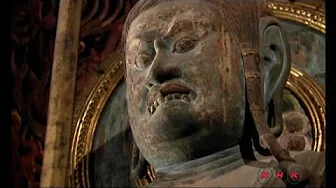Kiyomizu-dera temple, located in Kyoto, is a place steeped in history and legends, offering visitors a glimpse into Japan’s rich cultural heritage. Originally built in 798 and reconstructed in 1633, this temple holds the status of a World Cultural Heritage site. Central to its fame is the iconic stage known as Kyomizuno Butai, standing tall at 13 meters, equivalent to a four-story building. The proverb “jump off the stage of Kiyomizu” reflects a tradition where individuals believed their wishes would come true by taking a leap.
One fascinating tale surrounds the survival rate of those who dared to jump off the stage – a staggering 85% of jumpers from 1694 to 1864 survived the leap. However, visitors are advised against attempting this feat today. The temple’s longevity is also highlighted by the recent replacement of the stage’s posts with zelkova trees, with a plan for maintenance 400 years in the future.
Kiyomizu-dera boasts impressive carvings like the blue dragon guarding the east side and the intricate iron crocs and sticks of the legendary warrior Benkei. The three-storied pagoda, standing at 31 meters, offers a unique painting on each floor. Additionally, the temple’s strategic hilltop location provides panoramic views of Kyoto city.
Throughout its history, Kiyomizu-dera has preserved customs and stories, such as the Daikokuten god’s relocation closer to the main hall. Visitors also come across relics like the “tongue cut tea house,” bearing a somber tale of loyalty and sacrifice. Another intriguing feature is a Buddha statue said to grant wishes when its head is turned towards one’s lover.
As day turns to night, the temple’s serene ambiance transforms into a mystical experience, particularly during full moons. The blend of architecture, spirituality, and folklore at Kiyomizu-dera temple offers a captivating journey through Japan’s cultural tapestry.
In conclusion, Kiyomizu-dera temple in Kyoto stands as a testament to Japan’s intricate history, inviting visitors to explore its ancient traditions and compelling narratives.












